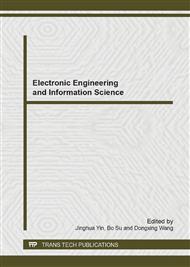p.769
p.774
p.778
p.782
p.786
p.793
p.797
p.801
p.806
Study on Feature Extraction of Ship Radiated Noise Based on Cepstrum and Anti-Noise Property
Abstract:
Line spectrum is one kind of important feature information of the ship radiated noise, which provides a strong basis for the ship detection and identification. Due to the complexity of marine environment and the special nature of underwater acoustic channel,it is difficult to obtain ship radiated noise’ signals from the complex background noise. Under this situation, this paper proposed the cepstrum as the extraction method of obtaining feature information of the ship radiated noise, and the robust to noise performance was analyzed and compared. The analysis’ result shows that the method is simple, which is able to accurately extract feature line spectrum and shows good robust to noise.
Info:
Periodical:
Pages:
786-789
Citation:
Online since:
July 2014
Authors:
Keywords:
Price:
Сopyright:
© 2014 Trans Tech Publications Ltd. All Rights Reserved
Share:
Citation:


